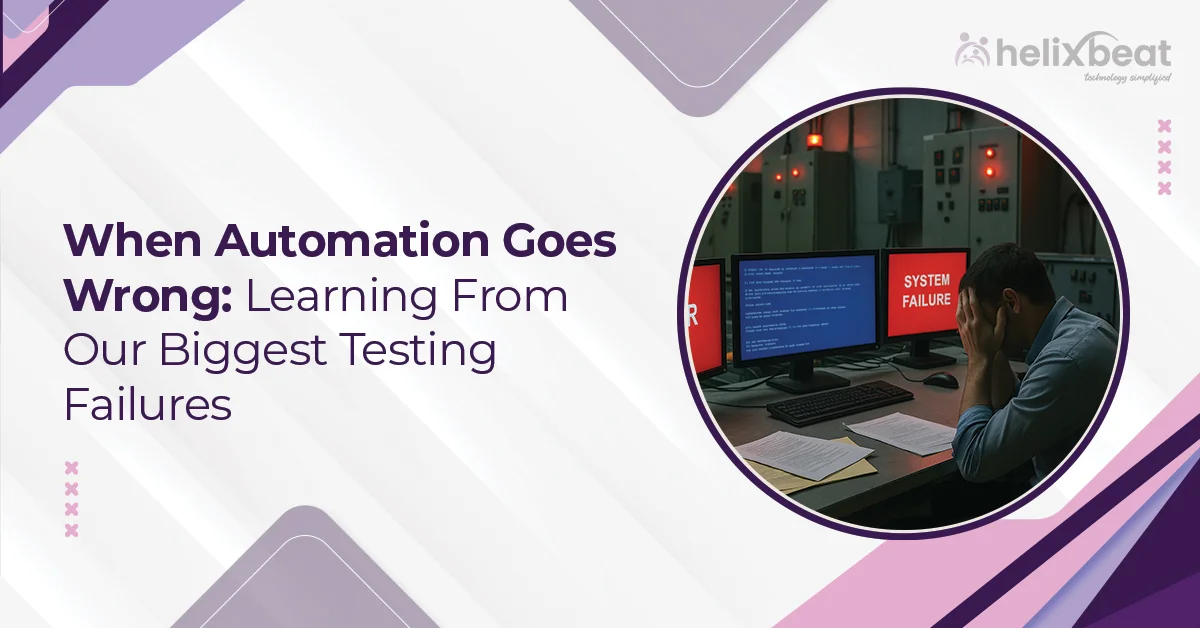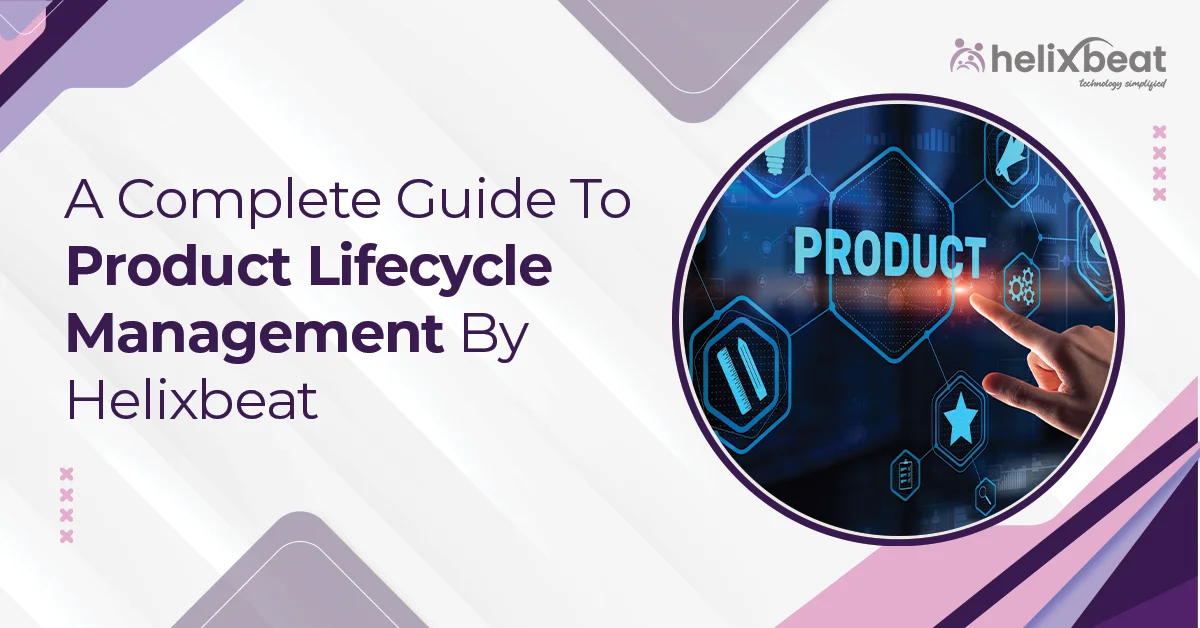Can software be so complex that it feels impossible to test? That’s what one client believed when they approached us, overwhelmed by edge cases, unstable environments, and ever-changing configurations. But with the right approach and the right software testing services, even the most untestable software can be managed.
When the client partnered with Helixbeat, they weren’t looking for just another software testing agency. They needed a team that could think creatively, adapt quickly, and engineer tests for a platform that seemed to defy traditional testing models. What followed was a journey of collaborative problem-solving, hard lessons, and well-earned breakthroughs.

Table of Contents
What Made the Project ‘Untestable’?
Even seasoned teams encounter software that breaks the usual rules of testing.
Constantly Changing Requirements
The client’s product was still in heavy development. Features were added, changed, or removed weekly. This made maintaining a fixed test suite nearly impossible, creating a major challenge for any software testing services team.
Lack of Documentation
Without technical documents or user guides, the QA team had to learn the platform by diving into the code and experimenting with different user flows, which complicated the work for the software testing services company.
Non-Deterministic Behavior
The application behaved differently under similar conditions due to a complex integration of AI-driven logic, third-party APIs, and asynchronous data flows. This made test results inconsistent, making it harder for software testing services to maintain reliable testing outcomes.
No Existing Test Framework
There was no test suite, no testing tools, and no CI/CD integration. The team had to build a test strategy from scratch while the dev team continued pushing new updates, requiring extra effort from the software testing services company.
All these factors created the perfect storm for any software testing services company.
How Did We Approach the ‘Impossible’?
At Helixbeat, we treat the unknowns not as blockers but as opportunities to create innovative testing solutions. Here’s how we overcame the challenge of testing software that seemed impossible to automate.
Step 1: Reframe the Problem
Instead of approaching it as one massive challenge, we broke the problem down into smaller parts: core functionality, user data handling, backend integrations, and API behaviors.
Step 2: Set Realistic Testing Goals
We didn’t strive for 100% coverage on day one. Instead, we focused on smoke tests for high-impact features first. Over time, we expanded to include regression and edge case validations.
Step 3: Establish a Testing Rhythm
By collaborating closely with the dev team, we created an agile feedback loop. Bugs discovered in the morning were triaged and fixed by evening, significantly reducing cycle time and enhancing the quality of our tests.
Step 4: Leverage Tooling Wisely
We implemented automated test cases using open-source tools integrated into a lightweight CI/CD pipeline. This enabled us to receive instant feedback on builds without slowing down release cycles.
This layered approach allowed us to build confidence in the project, overcoming challenges one function at a time, while adapting to the client’s evolving needs.
Key Challenges We Overcame (and What They Taught Us)
Real value came from how we adapted our thinking as we encountered unexpected roadblocks.
Challenge: Testing in Live Production
Due to the absence of a staging environment, we had to run tests in the live setup.
Solution: We used synthetic test data, rollback scripts, and close monitoring to reduce any risk to real users.
Challenge: Testing AI Decisions
Since outputs were based on machine learning models, test outcomes were not always predictable.
Solution: We built threshold-based testing logic rather than exact-match assertions, which allowed us to validate behavior within accepted ranges.
Challenge: Third-Party Dependency Failures
APIs from external services would occasionally time out or send unexpected data.
Solution: We implemented mocks and stubs to simulate API behavior and control our test environments better.
Each challenge pushed us to extend our skills and rethink how software testing services teams should handle real-world complexities.
Lessons That Made Us a Better Software Testing Team
Testing hard software doesn’t just test your tools; it tests your mindset, too.
Be Flexible with Test Plans
A rigid plan won’t survive the reality of ever-changing builds. We used flexible sprint-based test planning that adjusted with each iteration.
Invest in Exploratory Testing
Automated tests are valuable, but human testers who ask questions and follow unexpected paths found some of the most critical bugs.
Collaborate Early and Often
We worked closely with designers, product managers, and developers. Being involved early helped shape features in a more testable way.
Automate Gradually
As confidence grew, we automated repeatable flows. This gave us time to manually explore risk areas and fine-tune logic.
These strategies became part of our core testing model—a model we now apply across multiple industries as a software testing company in India.
Why Choosing the Right Testing Partner Matters?
Not all software testing companies are built to handle such challenges. Here’s what made a difference for our client.
Experience with Complex Platforms
As a QA testing company in India, Helixbeat has worked with clients in fintech, healthcare, and logistics. We bring multi-industry expertise that applies smartly across domains.
Testing as a Service (TaaS) by Helixbeat
With Helixbeat’s Testing as a Service, businesses get tailored, end-to-end software testing services covering everything from functional testing to compatibility audits.
Our flexible engagement models—dedicated teams, managed services, or on-demand testing—allow startups and enterprises to scale testing without bottlenecks.
Smart Use of Tools
Helixbeat leverages over 20 automation and performance testing tools, including Selenium, JMeter, and Appium—all customized to each project’s needs.
This level of personalization, paired with reliable delivery, makes Helixbeat a standout software testing agency.
What Makes a Software Testing Service Truly Reliable?
If you’re evaluating a software testing services company, here’s what you should look for:
Customization, Not Templates
Every product has different testing needs. Your partner should design testing plans that reflect your tech stack, user base, and development cycle.
Transparent Communication
Frequent updates, clear documentation, and real-time bug tracking help teams stay aligned and build trust.
Scalable Processes
Whether you’re running a weekly release or a continuous deployment cycle, your QA setup should scale without rewriting everything.
Problem-Solving Approach
Finally, a good testing team isn’t just checking boxes. They’re solving product problems—from user experience issues to backend bottlenecks.
This mindset separates average vendors from a real software testing company in India like Helixbeat.
Final Words
Every project has a challenge that feels “untestable.” But with the right mindset, method, and support, nothing is truly impossible.
Helixbeat turned a client’s most complex software challenge into a repeatable, scalable, and reliable QA success story. Through its software testing services, Helixbeat helps companies innovate faster, release confidently, and grow stronger.
If your team is stuck with a product that’s tough to test or manage, let Helixbeat step in. Our Testing as a Service model is built to handle complexity—and turn chaos into clarity.
FAQs
1. What makes software hard to test?
Complex logic, lack of documentation, unstable environments, or fast-changing codebases make software difficult to test effectively.
2. How do software testing services help with complex projects?
They break down problems, build custom test strategies, and combine automation with manual testing to cover unpredictable areas.
3. What is Testing as a Service (TaaS)?
TaaS is an outsourced solution that delivers end-to-end testing, tailored to your software’s needs, often with flexible engagement models.
4. Can exploratory testing replace automation?
No, but it complements automation by finding unexpected bugs, especially in UI-heavy or dynamic applications.
5. How quickly can a software testing agency ramp up for a new project?
Helixbeat offers rapid onboarding with its on-demand and managed testing models, making it ideal for time-sensitive deployments.













